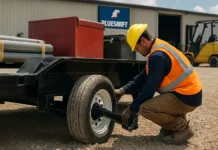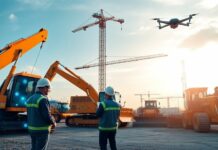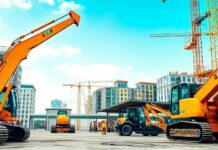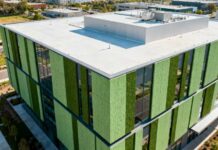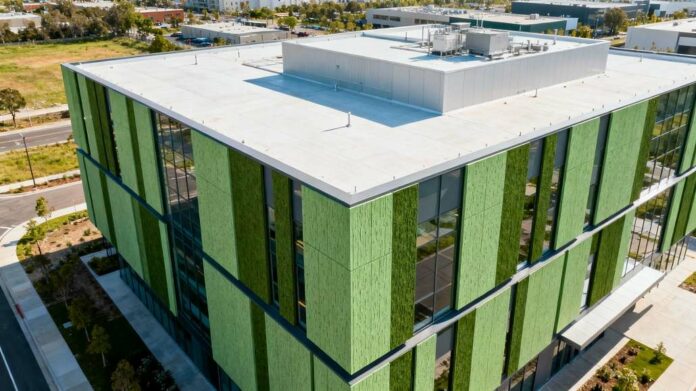The construction industry stands at a critical juncture where environmental imperatives have transitioned from optional consideration to fundamental business necessity. Buildings account for over 40 percent of global carbon dioxide emissions throughout their complete lifecycle—from material extraction and manufacturing through construction, operation, and eventual demolition. This sobering reality has catalyzed an urgent search for building methodologies and materials fundamentally reducing environmental impact without compromising structural integrity or performance requirements.
Sustainable construction with advanced composites represents a transformative response to this challenge, offering materials and systems that simultaneously achieve environmental stewardship and superior performance characteristics. Rather than treating sustainability as a constraint demanding performance compromises, advanced composites and eco-friendly materials demonstrate that buildings can be stronger, more durable, more energy-efficient, and more sustainable than structures built through conventional approaches.
The global market recognizes this transformation. Construction organizations worldwide increasingly specify green construction materials incorporating advanced fiber-reinforced polymers, bio-based matrices, and innovative reinforcement systems. Projects demonstrating these capabilities deliver quantifiable environmental benefits—carbon footprint reductions reaching 90 percent, energy consumption decreases of 60 percent, and lifecycle cost savings justifying premium material investments through extended service life and reduced maintenance requirements.
The Composite Revolution: Understanding Material Fundamentals
Advanced composites consist of reinforcing fibers embedded within matrix materials, creating engineered materials exhibiting properties superior to constituent components alone. Traditional composites typically incorporate glass or carbon fibers within epoxy or polyester resins. Sustainable construction with advanced composites extends this concept through deliberate specification of environmentally responsible reinforcements and bio-based matrices aligned with carbon-reduction objectives.
Material Composition and Performance Architecture
Contemporary green construction composites employ diverse fiber reinforcements and matrix systems depending on application requirements. Carbon fibers deliver exceptional strength-to-weight ratios, enabling lightweight structures requiring minimal material volume. Glass fibers provide cost-effective reinforcement suitable for applications where weight reduction justifies less dramatic performance advantages. Advanced composites research increasingly emphasizes bio-based alternatives including flax, hemp, jute, and cellulose fibers derived from renewable agricultural resources.
The matrix material determines composite durability, temperature resistance, and environmental performance. Traditional petroleum-derived epoxy resins gradually give way to bio-based matrices including plant-derived polyurethane and advanced bio-resins manufactured from renewable feedstocks. These bio-based matrices reduce embodied carbon significantly while maintaining mechanical properties required for demanding structural applications.
When reinforcing fibers and matrix materials combine strategically, resulting composites achieve performance characteristics impossible for either component individually. A carbon fiber-reinforced epoxy composite might achieve tensile strength exceeding 600 megapascals while weighing 60 percent less than equivalent steel structural members. Hemp fiber-reinforced bio-resin composites might achieve 40 to 50 percent heating energy reductions while generating negative embodied carbon during their full lifecycle.
Environmental Performance Metrics
Advanced composites deliver measurable environmental advantages across multiple dimensions. Carbon fiber-reinforced polymer production generates approximately 0.18 tons of carbon dioxide per ton of material produced, representing 90 percent lower embodied carbon compared to steel production generating 1.8 tons of carbon dioxide per ton. Glass fiber reinforced polymers achieve similarly dramatic advantages—producing 0.18 tons of carbon dioxide per ton compared to aluminum production generating 8 to 12 tons of carbon dioxide per ton depending on recycled content.
Beyond production emissions, eco-friendly materials reduce operational environmental impact through superior thermal performance. Buildings incorporating composite insulation materials reduce heating and cooling energy consumption by 40 to 60 percent compared to conventional construction. Over building lifespans spanning 50 to 100 years, these operational energy reductions dwarf initial production impacts, creating structures with net-negative carbon profiles when comprehensive lifecycle assessment incorporates all environmental costs.
Material durability fundamentally influences environmental sustainability. Advanced composites exhibiting service lives of 75 to 100 years require less frequent replacement compared to conventional materials degrading within 30 to 50 years. This extended service life reduces cumulative environmental impact through decreased replacement frequency and associated material extraction, manufacturing, and transportation requirements.
Fiber-Reinforced Polymers: Engineering Superior Performance
Fiber-reinforced polymer composites represent perhaps the most extensively researched and commercially deployed advanced composite category. These materials combine reinforcing fibers—carbon, glass, or natural fibers—with polymer matrices creating materials optimized for diverse structural applications.
Carbon Fiber Composites for Exceptional Strength-to-Weight
Carbon fiber-reinforced polymers (CFRP) exhibit mechanical properties enabling design solutions impossible through conventional materials. At equivalent weight, CFRP structures prove approximately twice as strong as comparable steel members. This dramatic strength advantage enables lighter buildings requiring smaller foundations, reduced material volume, and decreased structural support requirements throughout building systems.
The strength advantage translates directly to cost and environmental benefits. A building framed with CFRP members might weigh 40 to 50 percent less than equivalent conventional construction. Reduced structural weight justifies smaller foundation systems, enabling shallower excavation and foundation material reduction. Lighter overall building weight reduces seismic loads enabling more efficient seismic resistance strategies, often reducing total structural material requirements by additional 10 to 20 percent.
Corrosion resistance represents another significant CFRP advantage. Unlike steel requiring protective coatings and maintenance to prevent rust, CFRP exhibits permanent corrosion resistance. This advantage proves particularly valuable for infrastructure near saltwater environments—coastal buildings, marine structures, bridge support systems. Steel components in such environments require continuous protective maintenance throughout service life. CFRP maintenance requirements effectively vanish, reducing long-term operational costs while eliminating maintenance-related environmental impacts from protective coatings and replacement materials.
Glass Fiber Composites for Cost-Effective Sustainability
Glass fiber-reinforced polymers (GFRP) provide substantial sustainability benefits at lower material costs than carbon alternatives. While individual strength characteristics prove less dramatic than carbon fibers, GFRP still achieves meaningful strength advantages and environmental benefits compared to conventional materials.
GFRP production consumes approximately 17 megajoules of energy per kilogram, compared to 18 megajoules for steel—appearing comparable until considering that GFRP achieves strength roughly equivalent to steel at one-fourth the density. This weight advantage means that equivalent load-carrying capacity requires only one-quarter the GFRP material mass compared to steel, translating to 75 percent energy consumption reduction when accounting for strength-adjusted material requirements.
GFRP corrosion resistance and durability reduce lifecycle maintenance costs dramatically. While steel structures typically require corrosion protection renewal and maintenance every 20 to 30 years, GFRP structures can exceed 75 years of service life without material degradation from environmental exposure. This extended service life reduces cumulative maintenance costs and associated environmental impacts by approximately 60 to 70 percent compared to equivalent steel structures.
Natural Fiber Composites: Bio-Based Sustainability
Bio-based composites incorporating natural fiber reinforcements represent an emerging frontier in sustainable construction with advanced composites, combining technical performance with environmental benefits aligned with circular economy principles. Hemp, flax, jute, and other agricultural fibers provide reinforcement demonstrating competitive strength-to-weight ratios with glass fibers while incorporating substantial environmental advantages.
Natural fibers sequester atmospheric carbon during plant growth—one hectare of hemp captures approximately 15 tons of carbon dioxide annually. When incorporated into composites and deployed in building applications, this captured carbon remains sequestered throughout structure service life. Buildings constructed from hemp fiber composites achieve net-negative embodied carbon—storing more carbon than production generates—enabling construction to function as climate mitigation rather than climate burden.
Hemp fiber reinforced composites reduce heating requirements by 40 to 50 percent compared to conventional construction through superior thermal insulation properties. A hempcrete composite structure reduces annual heating costs by 20 to 30 percent, providing occupants with direct economic benefits while simultaneously reducing operational carbon emissions. Combined with embodied carbon advantages, hemp composites deliver comprehensive environmental performance difficult for conventional materials to match.
Natural fiber composites also support circular economy principles through biodegradability and waste reduction. Unlike synthetic composite waste requiring specialized recycling processes, natural fiber composites can return to natural cycles through composting or controlled degradation, eliminating end-of-life disposal challenges. When reaches end-of-service life, hemp and flax composites can safely biodegrade without generating toxic byproducts or creating persistent environmental contamination.
Thermal and Acoustic Performance Optimization
Advanced composites enable performance optimization extending far beyond structural adequacy into thermal regulation and acoustic management—dimensions increasingly critical for sustainable building performance.
Thermal Regulation Through Composite Integration
Composite insulation materials incorporating air-filled fiber structures achieve thermal performance exceeding conventional insulation. Composite materials with vacuum or aerogel matrix systems achieve thermal resistance values approaching 0.5 Kelvin per watt—performance five to eight times superior to conventional fiberglass insulation. These exceptional thermal properties reduce building heating and cooling loads dramatically.
A building envelope constructed from high-performance composite insulation reduces annual heating requirements by 50 to 60 percent compared to conventional construction employing standard insulation. Over building lifespans, these operational energy reductions accumulate to enormous environmental benefits. A typical 5,000-square-meter office building constructed with conventional insulation consumes approximately 500 megawatt-hours of heating energy annually. Identical building framed with advanced composite insulation systems might consume 200 to 250 megawatt-hours—directly reducing operational carbon emissions by 150 to 250 tons annually.
Phase-change materials (PCMs) incorporated within composite matrices provide dynamic thermal regulation. These materials store thermal energy during warm periods and release stored energy during cool periods, naturally smoothing indoor temperature fluctuations. Buildings incorporating PCM composites reduce mechanical heating and cooling system operation by 25 to 35 percent, extending equipment life while reducing energy consumption and operational carbon.
Acoustic Performance and Sound Management
Fiber-reinforced composite structures exhibit acoustic properties enabling design solutions addressing urban noise challenges increasingly characteristic of dense urban environments. Hemp fiber composites reduce exterior noise by approximately 30 percent compared to conventional construction, providing meaningful acoustic improvement for buildings in urban locations experiencing chronic noise exposure.
This acoustic advantage extends beyond occupant comfort to support health and productivity improvements. Research indicates that excessive noise exposure impairs cognitive function, disturbs sleep, and triggers stress responses. Buildings providing superior acoustic environments through composite construction demonstrate measurable productivity improvements and occupant health enhancements, creating economic value justifying material investment from occupant welfare and organizational productivity perspectives.
Real-World Implementation and Case Studies
Sustainable building with advanced composites transitions from theoretical potential to demonstrated reality through diverse projects implementing these materials across application categories.
Structural Applications: The ITECH Pavilions
University of Stuttgart’s ITECH Research Pavilion 2024 program demonstrates flax fiber composite structural applications previously considered impossible. The main pavilion features 20 roof beams constructed from filament-wound flax fibers, with beams sized appropriately for the structural loads while weighing 60 to 70 percent less than equivalent conventional material alternatives. The structural performance demonstrates that natural fiber composites satisfy demanding load requirements while delivering sustainable building outcomes.
The pavilion design employed coreless robotic winding technologies integrating flax fibers with bio-based resin systems. This robotic precision enabled optimization of fiber orientation and matrix distribution—capabilities ensuring that material deployment aligns precisely with structural requirements. The resulting structure exhibits mechanical efficiency where virtually all material volume contributes meaningfully to structural function, eliminating waste and optimizing performance-to-material ratios.
This project demonstrates that green construction using advanced composites doesn’t require compromise between structural excellence and environmental responsibility. Natural fiber composites achieved load-bearing capabilities and architectural expression equivalent or superior to conventional materials while delivering environmental benefits conventional approaches cannot match.
Façade Innovation: Cité Scolaire Internationale Jacques Chirac
The Cité Scolaire business school in Marseille completed 880 lightweight shading panels incorporating flax fiber composites, demonstrating that eco-friendly materials enable sophisticated architectural expression and performance optimization simultaneously. Designed by internationally acclaimed architects Rudy Ricciotti and Roland Carta for Bouygues Bâtiment Sud-Est, the façade system provides dynamic solar shading controlling heat gain while maintaining visual connection between interior spaces and exterior environment.
The composite shading panels weigh substantially less than conventional materials, requiring less structural support and enabling architectural solutions where weight constraints would otherwise constrain designer freedom. The natural fibers provide aesthetic qualities resonating with contemporary design sensibilities emphasizing connection between built environment and natural systems. Performance monitoring confirmed that the composite façade reduces cooling loads by 30 to 40 percent compared to buildings with conventional fixed shading, translating to annual energy savings of approximately 150 megawatt-hours for a typical 10,000-square-meter building.
Infrastructure Applications: Amsterdam’s NEMO Science Museum
Dutch composite innovator NPSP collaborated with European partners to deliver green composite façades for the iconic NEMO Science Museum designed by renowned architect Renzo Piano. The vibrant green cladding utilizes bio-based composite panels incorporating natural fibers and plant-derived matrices, creating architectural elements simultaneously providing aesthetic expression and environmental performance.
The façade system demonstrates that bio-based composites enable sophisticated architectural visions where conventional sustainable materials might prove inadequate. The natural green coloration derives from composite material formulation rather than surface finish, ensuring permanence and eliminating maintenance-related repainting requirements. This integration of material characteristics with architectural intent demonstrates how green construction and design excellence prove mutually reinforcing rather than conflicting.
Implementation Strategies and Adoption Pathways
Sustainable construction with advanced composites expands progressively as design professionals, contractors, and developers develop expertise deploying these materials effectively. Several strategic approaches facilitate successful implementation.
Design Phase Integration
Composite materials require design approaches differing from conventional materials. Rather than designing for conventional construction and subsequently retrofitting composite materials, optimal outcomes emerge when design processes explicitly consider composite capabilities and constraints from initial concept development. Design teams should engage materials specialists during early project phases, exploring how composite properties enable solutions advancing project objectives across performance, aesthetic, and sustainability dimensions.
Parametric design approaches enable optimization accounting for composite anisotropy—composite properties varying by direction. Rather than assuming isotropic material properties like conventional materials, designers specify fiber orientations and matrix distributions optimizing performance for anticipated loading patterns. This precision design approach simultaneously minimizes material volume and maximizes performance—a powerful combination advancing both efficiency and sustainability.
Supply Chain Development
Successful composite deployment requires supply chain infrastructure providing reliable material availability, technical support, and quality assurance. In regions with emerging composite markets, projects should consider partnerships with established composite manufacturers having proven quality systems and technical capabilities. As market demand develops, additional suppliers enter markets enabling price competition and supply chain diversification.
Regulatory Compliance and Standards Development
Building codes and standards continue evolving to accommodate composite materials. Projects should verify code compliance during planning phases, engaging with code authorities early to understand acceptance criteria and testing requirements. Organizations developing standards increasingly recognize that advanced composites satisfy performance requirements equivalent or superior to conventional materials, streamlining approval processes.
Future Directions and Emerging Technologies
Advanced composite technology continues advancing through research in novel reinforcement materials, innovative matrix systems, and manufacturing process improvements enabling cost reductions and sustainability enhancements.
Nanofiber reinforcement represents an emerging frontier where infinitesimal fibers dramatically enhance composite properties without adding substantial material volume. Carbon nanotubes and other nanostructures increase composite strength by 20 to 40 percent at equivalent weight, enabling even lighter, more efficient structures.
Self-healing composite matrices incorporate microencapsulated healing agents that automatically seal cracks when composite damage occurs. This breakthrough technology extends composite service life by preventing crack propagation into catastrophic failures, reducing maintenance requirements and extending functional life.
Recyclable composite matrices enabling end-of-life material recovery without property degradation promise to address composite recycling challenges limiting historical adoption. Developing thermoplastic matrix systems—which soften when heated enabling reshaping—rather than thermoset systems requiring energy-intensive degradation processes, could enable true circular economy approaches for composite materials.
Conclusion: The Sustainable Future of Construction Materials
Sustainable building with advanced composites has transitioned from experimental innovation to demonstrated approach delivering measurable environmental and economic benefits across diverse applications. The convergence of environmental necessity, technical advancement, and economic advantage creates compelling rationale for broad adoption.
For construction professionals, architects, and developers committed to building excellence aligned with environmental responsibility, green construction incorporating advanced composites represents an essential tool enabling infrastructure development satisfying contemporary performance expectations while establishing sustainable practices for future generations. The evidence from successful projects worldwide demonstrates that environmental responsibility and structural excellence prove mutually reinforcing rather than conflicting objectives, enabling construction approaches advancing both simultaneously.
As composite technologies mature, costs decline, and expertise develops across the construction industry, sustainable construction with advanced composites will increasingly become mainstream practice rather than specialized innovation. Organizations positioning themselves today to understand, specify, and deploy these materials effectively will capture substantial competitive advantages in an evolving marketplace increasingly demanding infrastructure solutions simultaneously delivering performance and environmental responsibility.





